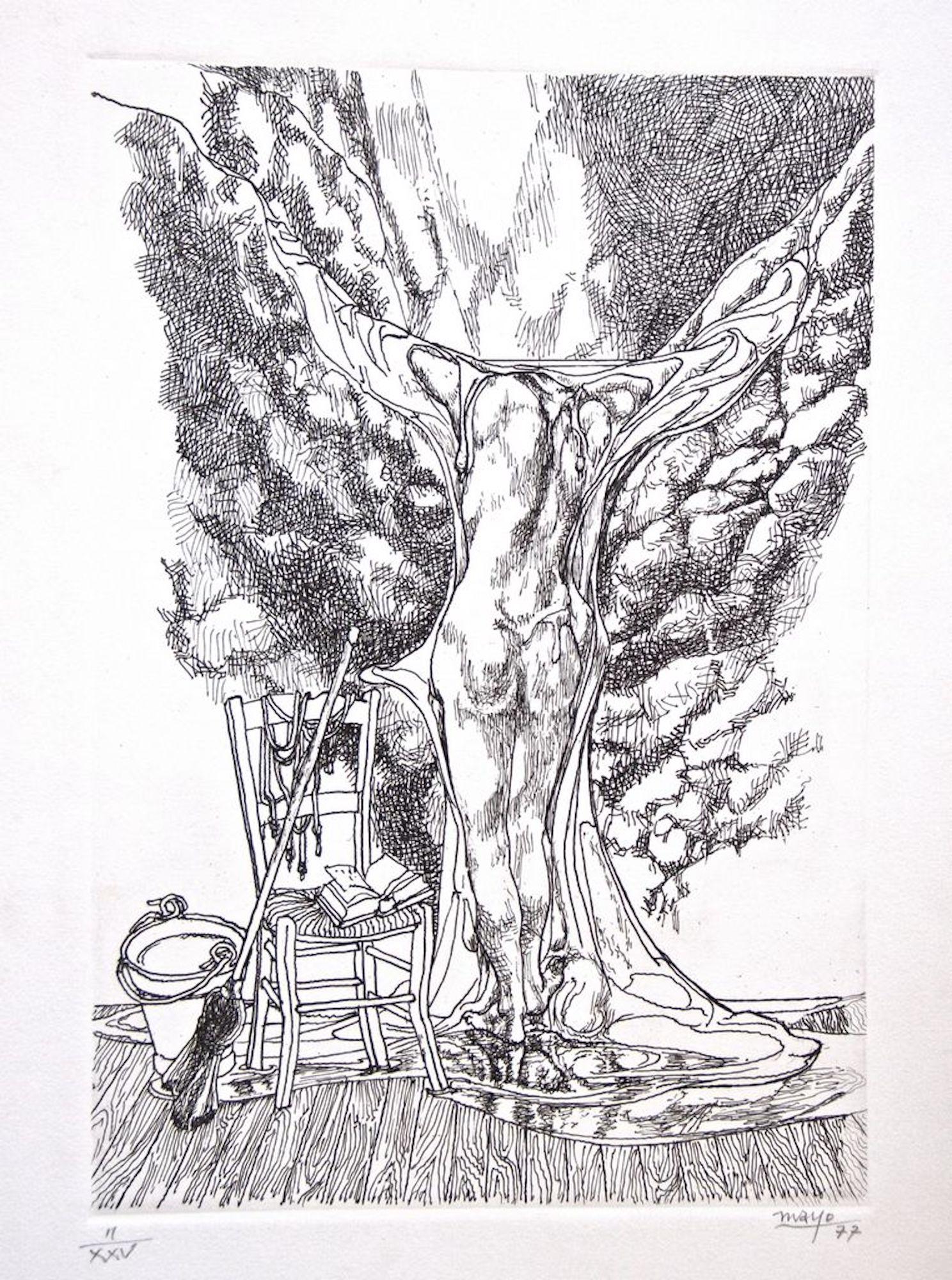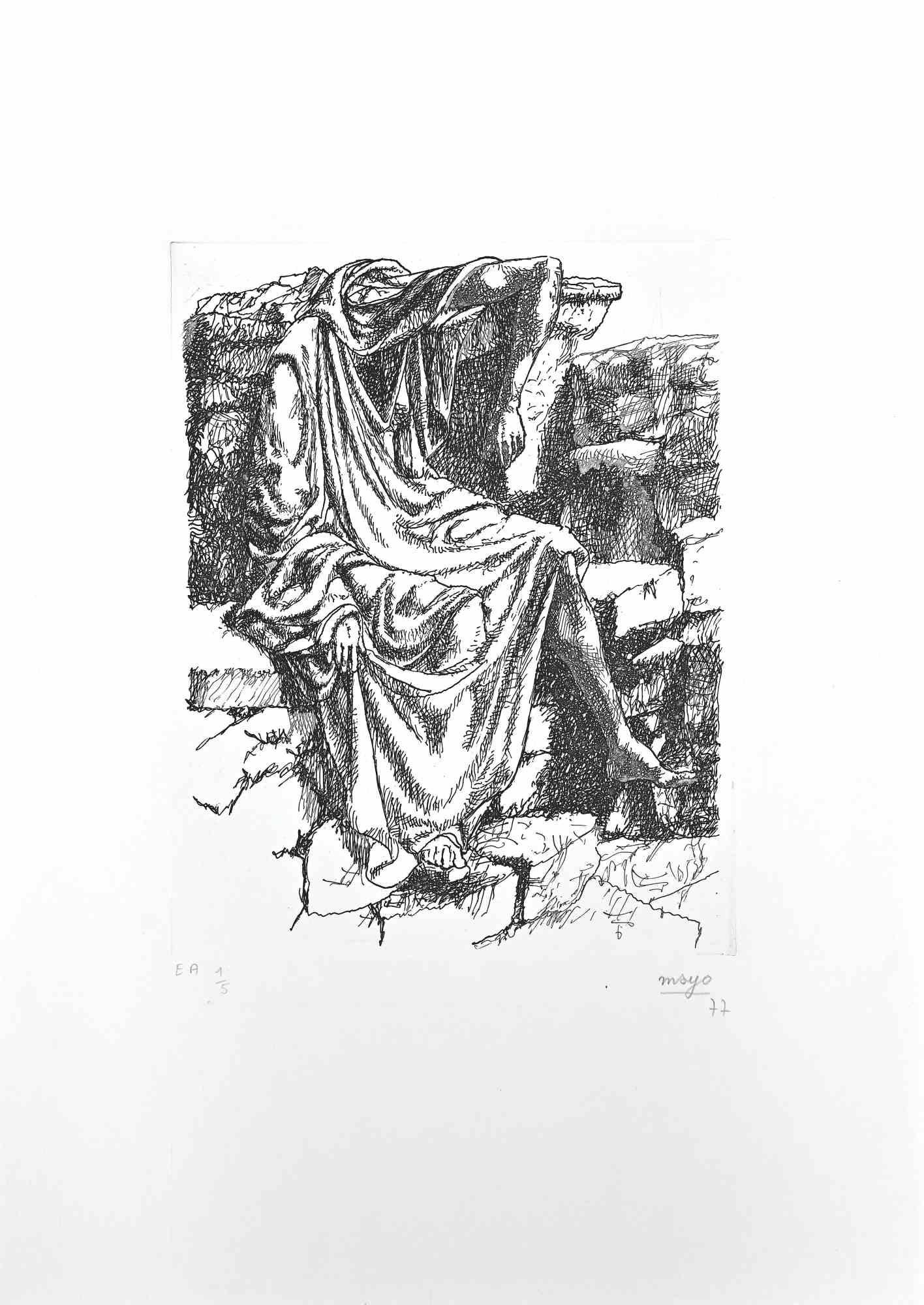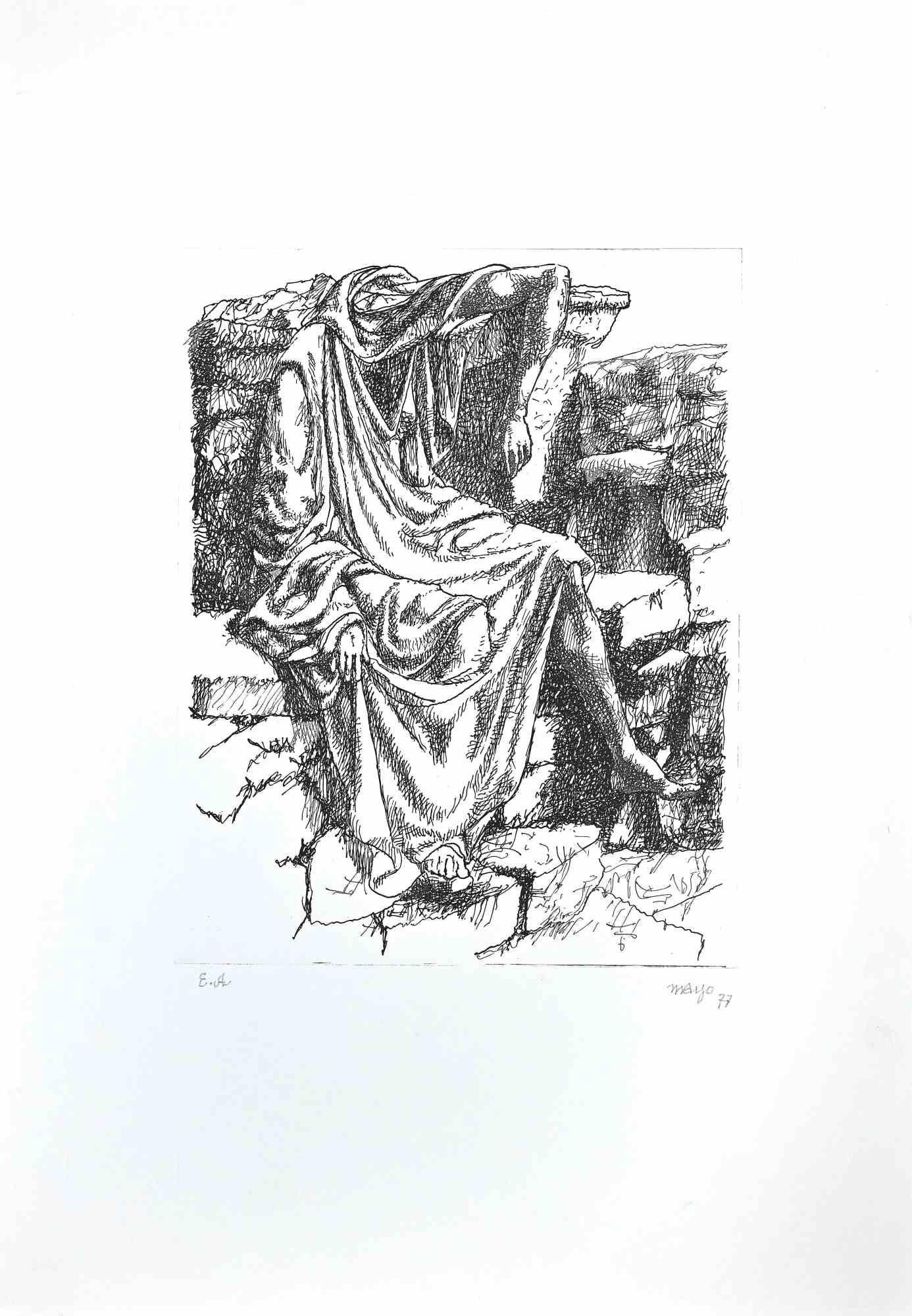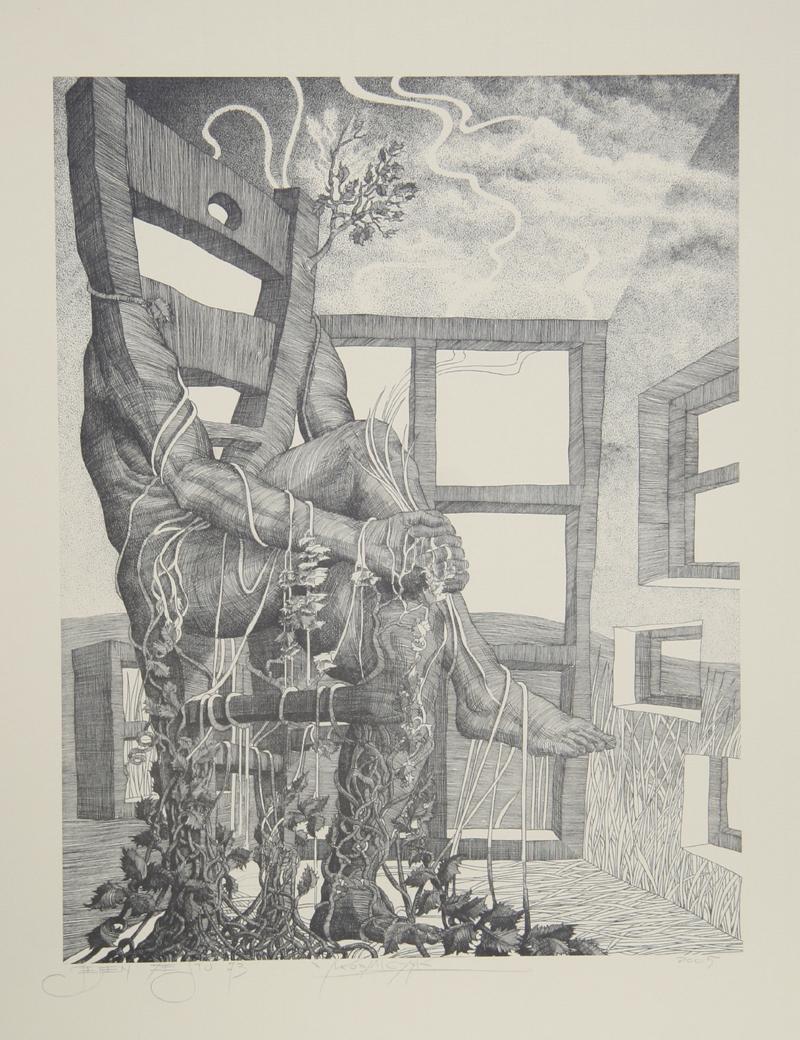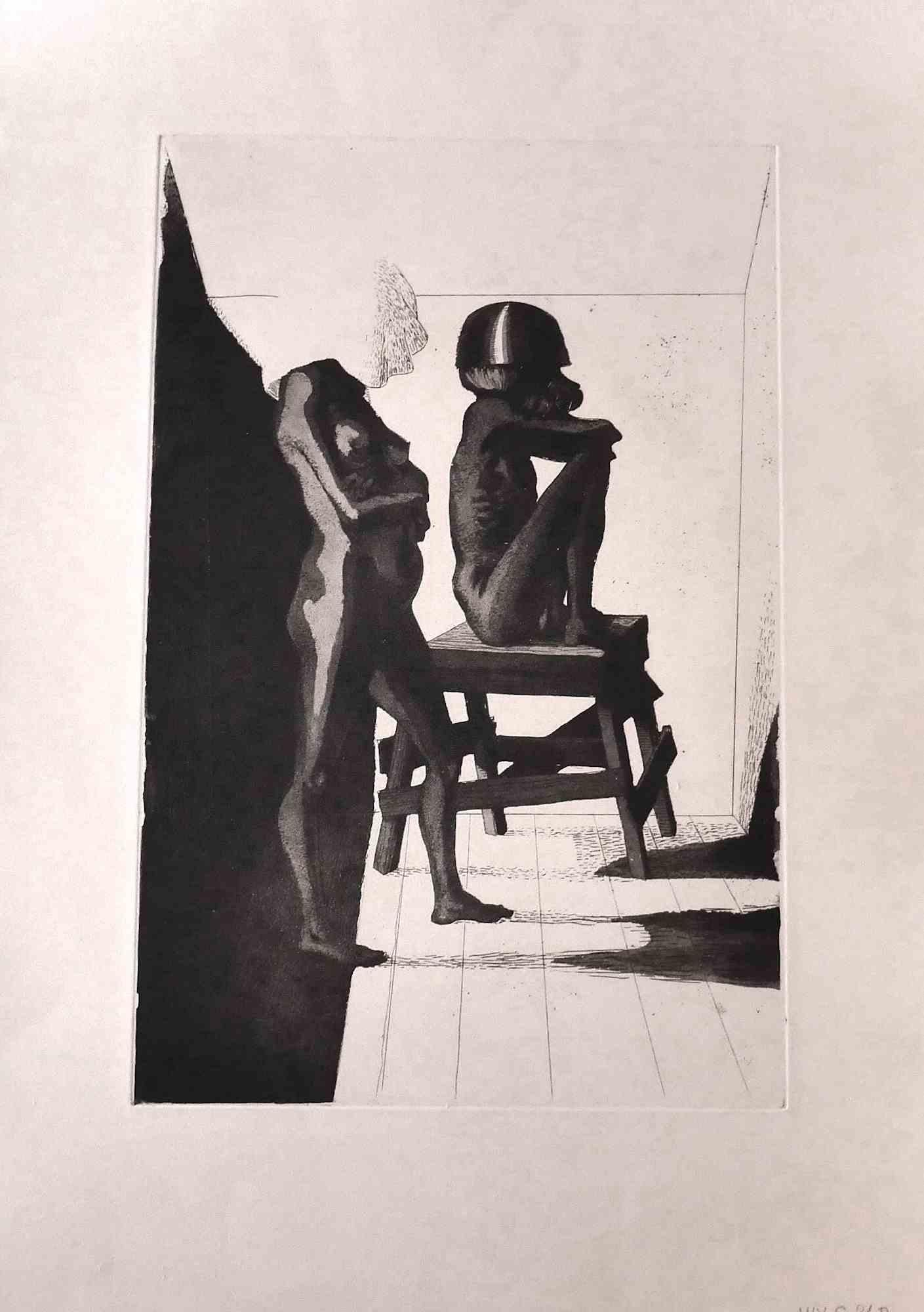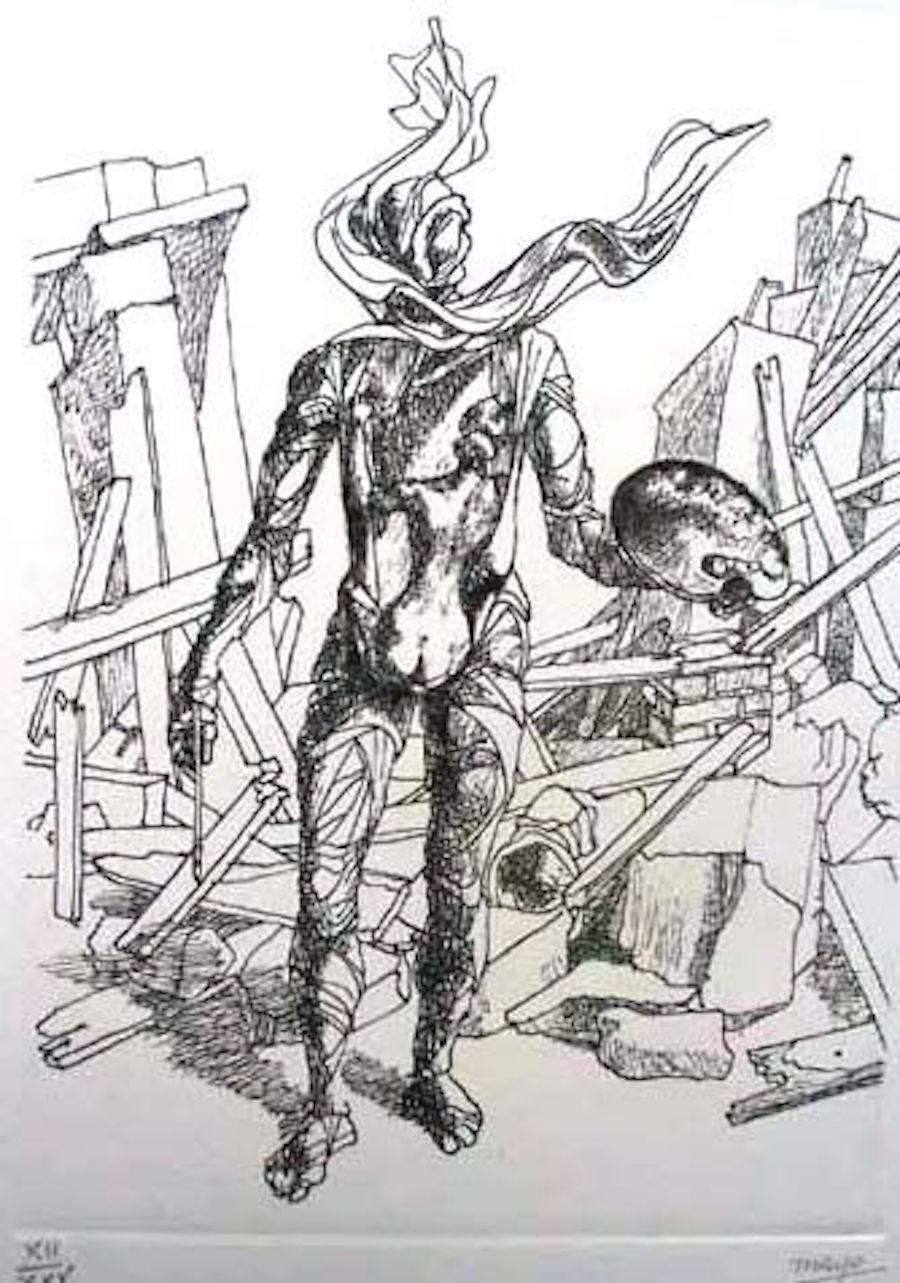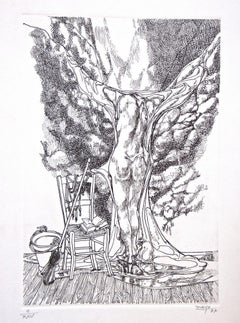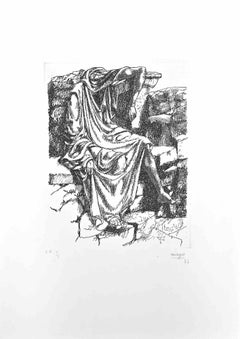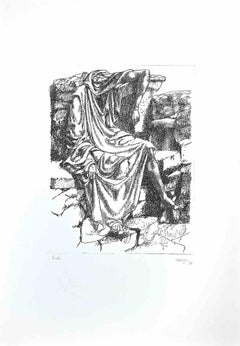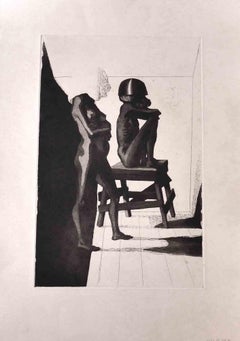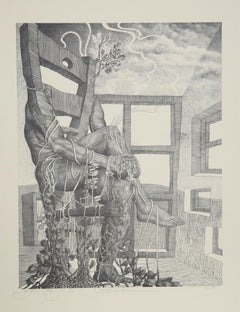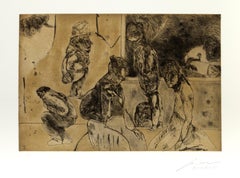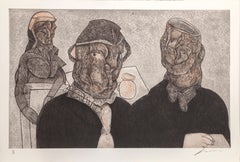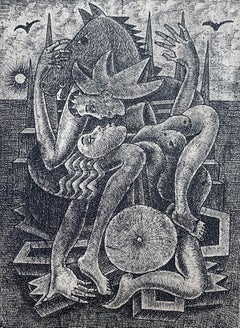Items Similar to The Hooded - Original b/w Etching - 1977
Want more images or videos?
Request additional images or videos from the seller
1 of 7
Mayo (Antoine Malliarakis)The Hooded - Original b/w Etching - 19771977
1977
$474.31
£356.46
€400
CA$664.24
A$728.47
CHF 377.42
MX$8,753.16
NOK 4,751.07
SEK 4,459.01
DKK 3,048.14
About the Item
Image dimensions: 23x28 cm.
Edition of 25 prints, numbered and hand signed.
Excellent conditions.
- Creator:Mayo (Antoine Malliarakis) (1905-1990, French)
- Creation Year:1977
- Dimensions:Height: 13.98 in (35.5 cm)Width: 19.69 in (50 cm)Depth: 0.04 in (1 mm)
- Medium:
- Movement & Style:
- Period:
- Condition:Insurance may be requested by customers as additional service, contact us for more information.
- Gallery Location:Roma, IT
- Reference Number:Seller: J-672691stDibs: LU65033847911
About the Seller
4.9
Platinum Seller
Premium sellers with a 4.7+ rating and 24-hour response times
1stDibs seller since 2017
7,768 sales on 1stDibs
Typical response time: 1 hour
- ShippingRetrieving quote...Shipping from: Roma, Italy
- Return Policy
Authenticity Guarantee
In the unlikely event there’s an issue with an item’s authenticity, contact us within 1 year for a full refund. DetailsMoney-Back Guarantee
If your item is not as described, is damaged in transit, or does not arrive, contact us within 7 days for a full refund. Details24-Hour Cancellation
You have a 24-hour grace period in which to reconsider your purchase, with no questions asked.Vetted Professional Sellers
Our world-class sellers must adhere to strict standards for service and quality, maintaining the integrity of our listings.Price-Match Guarantee
If you find that a seller listed the same item for a lower price elsewhere, we’ll match it.Trusted Global Delivery
Our best-in-class carrier network provides specialized shipping options worldwide, including custom delivery.More From This Seller
View AllSurrealist Nude - Original b/w Etching - 1977
By Mayo (Antoine Malliarakis)
Located in Roma, IT
Image dimensions: 33x22.5 cm.
Edition of 25 prints, numbered and hand signed.
Excellent conditions.
Category
1970s Surrealist More Prints
Materials
Etching
Personnage Sans Tête - Original Etching by Mayo - 1977
Located in Roma, IT
Personnage sans Tête is an original black and white etching on paper, realized by the artist Antoine Mayo , art name of Malliarakis (1905-1990) in 1977.
Hand-Signed in pencil on the lower right margin, artist's proof, as the pencil inscription reports on the lower left margin "E.A, 2/5 edition.
In good condition
Antoine Mayo (Port Said, Egypt 1905 - Seine Port1990) Greek painter naturalized French citizen, active from 1924 in France, was a Surrealist artist and a polyhedric artist: painter, decorator, costume, designer, illustrator and much more. His father was Greek and his mother French, friend of Prévert and Desnos, he is also known for his work as a decorator and costume designer of masterpieces such as Les Enfants du Paradis, Golden helmet or Hiroshima my love.
Category
1970s Surrealist Figurative Prints
Materials
Etching
Personnage Sans Tête - Original Etching by Mayo - 1977
Located in Roma, IT
Personnage sans Tête is an original black and white etching on paper, realized by the artist Antoine Mayo , art name of Malliarakis (1905-1990) in 1977.
Hand-Signed in pencil on the lower right margin, artist's proof, as the pencil inscription reports on the lower left margin "E.A.
In good condition
Antoine Mayo (Port Said, Egypt 1905 - Seine Port1990) Greek painter naturalized French citizen, active from 1924 in France, was a Surrealist artist and a polyhedric artist: painter, decorator, costume, designer, illustrator and much more. His father was Greek and his mother French, friend of Prévert and Desnos, he is also known for his work as a decorator and costume designer of masterpieces such as Les Enfants du Paradis, Golden helmet or Hiroshima my love.
Category
1970s Surrealist Figurative Prints
Materials
Etching
Silence - Original Etching by Leo Guida - 1970s
By Leo Guida
Located in Roma, IT
Silence is an original Etching realized by Leo Guida in the 1970s.
Good Conditions.
The artwork is depicted through strong strokes in a well-balanced composition.
Leo Guida (1992...
Category
1970s Contemporary Figurative Prints
Materials
Etching
The Painter - b/w Etching - 1977
By Mayo (Antoine Malliarakis)
Located in Roma, IT
Image dimensions: 33x22.5 cm.
Edition of 25 prints, numbered and hand signed.
Very good conditions.
Category
1970s Surrealist More Prints
Materials
Etching
Figures 2 - Original Etching by Guelfo Bianchini - 1959
By Guelfo Bianchini
Located in Roma, IT
Figures 2 is an original etching realized by Guelfo Bianchini in 1959.
The artwork is hand-signed by the artist on the lower right corner, and numbered on the lower left corner.
In...
Category
1950s Surrealist Figurative Prints
Materials
Etching
You May Also Like
Waiting, Surrealist Lithograph by Wojtek Kowalczyk
Located in Long Island City, NY
Waiting
Wojtek Kowalczyk, Polish (1960)
Date: 2005
Lithograph, signed in pencil
Size: 19.5 in. x 13.5 in. (49.53 cm x 34.29 cm)
Category
Early 2000s Surrealist Landscape Prints
Materials
Lithograph
El Cuarto Amarillo, Signed Etching by Jose Luis Cuevas
By José Luis Cuevas
Located in Long Island City, NY
With a title translating to "The Yellow Room", this print by José Luis Cuevas features several pained figures standing around, seemingly in wait.
El Cuarto Amarillo
José Luis Cuevas...
Category
1980s Surrealist Figurative Prints
Materials
Etching
Juan Valle Alvarado Confesar para Maria Burga, Etching by Jose Luis Cuevas
By José Luis Cuevas
Located in Long Island City, NY
Artist: Jose Luis Cuevas, Mexican (1934 - 2017)
Title: Juan Valle Alvarado Confesar para Maria Burga from the Intolerance Portfolio
Year: 1989
Medium: Aquatint Etching, Signed and nu...
Category
1980s Surrealist Figurative Prints
Materials
Etching
A passion - Figurative Etching Print Monochromatic Surreal Black & white
By Czeslaw Tumielewicz
Located in Warsaw, PL
Polish painter and graphic designer, Czeslaw Tumielewicz was born in 1942.
In 1968, he studied at the Architecture faculty of Gdank, before continuing his course at the Technical Un...
Category
2010s Contemporary Figurative Prints
Materials
Paper, Etching
Eduardo Naranjo Spanish Artist Original Hand Signed engraving 1984 n2
Located in Miami, FL
Eduardo Naranjo (Spain, 1944)
'Creación V', 1984
engraving on paper
15 x 20.9 in. (38 x 53 cm.)
Edition of 225
ID: NAR1115-002-225
Hand-signed by author
Category
1980s Surrealist Prints and Multiples
Materials
Paper, Engraving, Screen
Strangers - XXI Century, Contemporary Etching Print, Black and White, Figurative
By Agata Wasowska
Located in Warsaw, PL
AGATA WĄSOWSKA (born in 1972)
She was a student of the Academy of Fine Arts of the Department of Graphics. She received a grant form Hochschule fur Gestaltung in Offenbach. In 1999 s...
Category
Early 2000s Contemporary Figurative Prints
Materials
Paper, Etching
More Ways To Browse
Vintage Railway Carriages
Vintage Rolex Poster
Vintage Showgirls Art
Vintage Sugar Poster
Vintage Us Army Posters
Wiesbaden Poster
Yoko Ono Imagine Peace
York Railway Poster
Yoshitomo Nara Real One
1965 Salvador Dali Prints
Aboriginal Art Print
Alaska Poster
Albertus Seba Coral Print
Aldo Mazza
Alice Oehr
Ancient Maps Of Africa
Antique Peony Botanical Prints
Antique White Sewing Machine
